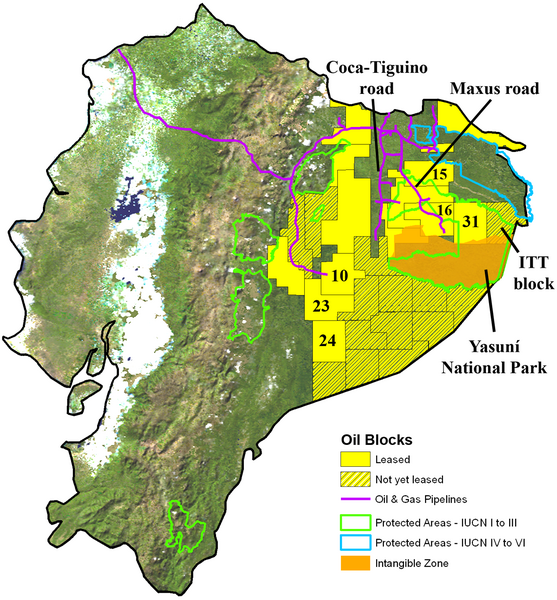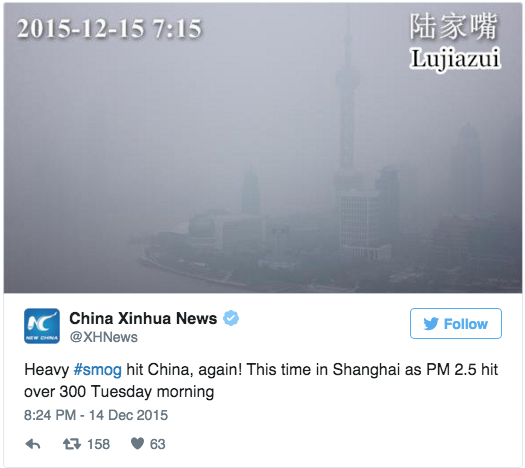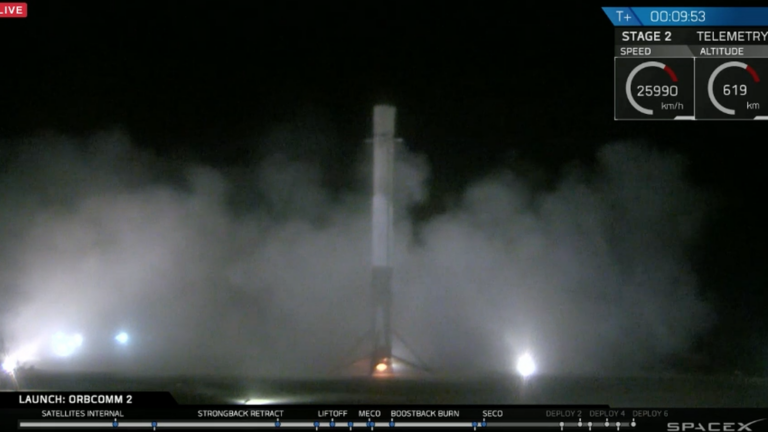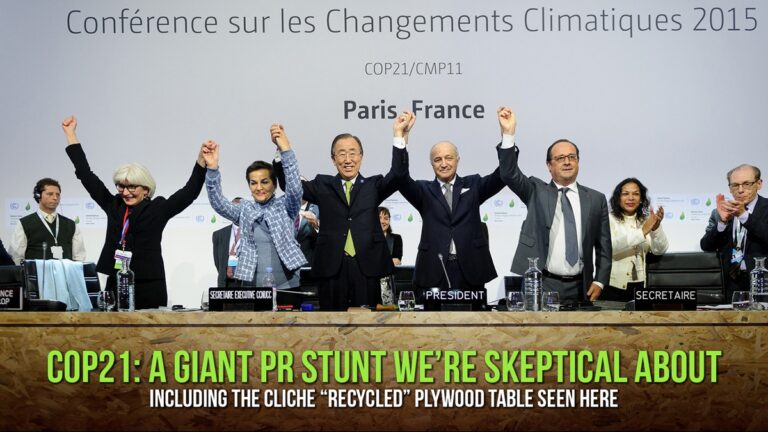Ron Finley: How Urban Gardening Can Change Your Lifestyle – Collective Evolution
Ron Finley, the Urban Gardener, isn’t your ordinary gangster, which is well and good for a chat with Marc Angelo. The two share a powerful discussion of the difference between promoting a cause and taking action on it, and there are few people in the world more qualified to have that talk. Ron’s moniker, […] …
The War On Your Plate: How Sugar Is Killing Us
We have never in history been exposed to the level of sugars we are ingesting today. The consequences of this is huge but it isn’t just sugars its all processed foods. From 1982 to 2012 in America we have seen a 100% rise in process food consumption. Yes ladies and gents we have DOUBLED our …
Japan Begins Construction On World’s Largest Floating Solar Farm
What happens when a country wants to boost their generation of solar power, but doesn’t have enough land for the number of panels needed? Well, the Japanese, among a few others, have been developing a novel solution: float them on large reservoirs. This week saw the country begin construction of the largest floating solar farm in the world, in which panels will eventually cover a 180,000 square meter area (2 million square feet), and with an aim of producing enough electricity to power 5,000 local homes.
When it reaches completion in 2018, the Yamakura dam floating power plant will have a total output of 13.7 megawatts (MW) from 51,000 panels. Despite breaking records on water, this figure falls way short of the record for land-based photovoltaics, with the current record breaker there being the Solar Star power station in California, churning out an impressive 579 MW, powered by 13 square kilometers (5 square miles) of solar panels.
Japan has seen a recent rise in the use of renewable energy sources, after the Fukushima disaster in 2011 meant all nuclear power plants were shut down. This led to a massive increase in the burning of fossil fuels to meet the nation’s electricity demand, heavily impacting Japan’s climate and carbon output commitments. In the face of this, there has been an increased interest in green energy.
This isn’t the first floating solar farm in Japan, as there are currently several others already up and running in the mountainous, space-starved country. The technology used is not anything new, it is readily available and accessible, so whether it will catch on in other countries remains to be seen. While it is still cheaper to build them on land, this is not always an option for those with limited space to do so.
Ecuador To Sell A Third Of Its Amazon Rainforest To Chinese Oil Companies
We believe that the Amazon is not for sale, nor is it for expanding a primitive source for fuel. Here is a link where you can join a petition by our good friends at AmazonWatch. – Valhalla mgnt
http://amazonwatch.org/take-action/stand-with-the-sapara-people-to-reject-todays-sham-contract

Ecuador is planning to auction off three million of the country’s 8.1 million hectares of pristine Amazonian rainforest to Chinese oil companies, Jonathan Kaiman of The Guardian reports.
The report comes as oil pollution forced neighbouring Peru to declare an environmental state of emergency in its northern Amazon rainforest.
Ecuador owed China more than $7 billion – more than a tenth of its GDP – as of last summer.
In 2009 China began loaning Ecuador billions of dollars in exchange for oil shipments. It also helped fund two of the country’s biggest hydroelectric infrastructure projects, and China National Petroleum Corp may soon have a 30 per cent stake in a $10 billion oil refinery in Ecuador.
“My understanding is that this is more of a debt issue – it’s because the Ecuadoreans are so dependent on the Chinese to finance their development that they’re willing to compromise in other areas such as social and environmental regulations,” Adam Zuckerman, environmental and human rights campaigner at California-based NGO Amazon Watch, told the Guardian.
The seven indigenous groups who live on the land are not happy, especially because last year a court ruled that governments must obtain “free, prior, and informed consent” from native groups before approving oil activities on their indigenous land.
“They have not consulted us, and we’re here to tell the big investors that they don’t have our permission to exploit our land,” Narcisa Mashienta, a leader of Ecuador’s Shuar people, said in a report.
Dan Collyns of The Guardian reports that “indigenous people living in the Pastaza river basin near Peru’s border with Ecuador have complained for decades about … pollution,” which has been caused by high levels of petroleum-related compounds in the area. The Argentinian company Pluspetrol has operated oil fields there since 2001.
Montreal Mayor Denis Coderre says Energy East pipeline too risky
Montreal Mayor Denis Coderre announced the city’s official opposition to proposed Energy East pipeline project Thursday, saying the potential risks outweigh its possible economic benefits to communities including his.
Coderre was joined by mayors including Laval and Longueuil who make up the Montreal Metropolitan Community.
“We are against it because it still represents significant environmental threats and too few economic benefits for greater Montreal,” said Coderre.
The announcement follows extensive public consultations the organization did last fall, he said.
The City of Montreal’s official opposition is the latest challenge to TransCanadaCorp.’s proposed pipeline project, which would carry 1.1 million barrels a day of oilsands crude through Quebec to an export terminal in Saint John, N.B.
The project would include the existing TransCanada pipeline as far east as Montreal plus a new pipeline through Quebec.

Coderre has voiced concerns about the project in the past, but until now has not taken an official position on it.
Laval Mayor Marc Demers said in September that he is “firmly against” the proposed pipeline.
Earlier Thursday, Energy East spokesman Tim Duboyce said the company will wait to see precisely what the mayors have to say and take it from there.
“We see this as an opportunity to have a document to help lay out what those concerns are so we can continue to consult with elected officials and other stakeholders,” he said.
Efforts to plug Porter Ranch-area gas leak worsened blowout risk, regulators say
Southern California Gas Co.’s effort to plug its leaking natural gas well involves higher stakes than simply stopping the fumes that have sickened many residents of Porter Ranch.
The company also is trying to avoid a blowout, which state regulators said is now a significant concern after a seventh attempt to plug the well created more precarious conditions at the site.
If a blowout occurs, highly flammable gas would vent directly up through the well, known as SS25, rather than dissipating as it does now via the subsurface leak and underground channels.
State officials said a blowout would increase the amount of leaked gas, causing greater environmental damage. That natural gas also creates the risk of a massive fire if ignited by a spark. The risk of fire already is so high that cellphones and watches are banned from the site
California Department of Conservation spokesman Don Drysdale called the possibility of fire “a concern” even without a blowout. The department is the umbrella agency that oversees the oil and gas regulators responsible for well safety.
The chief deputy director of the department, Jason Marshall, and a senior oil and gas field regulator assigned to daily watch at Aliso Canyon, Scott McGurk, told The Times the site and wellhead were made more unstable by the gas company’s attempts to stop the leak by pumping a slurry directly into the well.
The last of those efforts, which stretched over several days beginning Dec. 22, expanded a crater around the wellhead, state and gas company officials said.
The crater is now 25 feet deep, 80 feet long and 30 feet wide, those officials said. The wellhead sits exposed within the cavernous space, held in place with cables attached after it wobbled during the plugging attempt, Marshall and McGurk said. The well pipe and its control valves are exposed and unsupported within that hole, atop a deep field of pressurized gas.
Southern California Gas is now attempting to stop the leak by drilling relief wells to intercept the damaged well. Workers are not expected to reach the base of the well, 1.6 miles below ground, for at least six weeks.
“If the wellhead fails, the thing is just going to be full blast,” said Gene Nelson, a physical sciences professor at Cuesta College. “It will be a horrible, horrible problem. The leak rates would go way up.”
Sempra Energy, which owns the gas company, declined repeated requests from The Times to discuss current conditions at SS25. A gas company spokeswoman said the utility “would not speculate” on those questions.
At a meeting with community representatives last week, the gas company’s senior vice president for operations, Jimmie Cho, said attempts to plug the well from above were halted “for safety concerns.”
“As much as what’s going on is not a good thing, we don’t want to take a risk of that wellhead being lost,” Cho said.
State officials agreed.
“If one pushes too hard … and breaks the well in its entirety, we, the public residents, the operator, have a much bigger problem,” Marshall said.
The gas company would not provide current photos of the site or allow media access. It did not provide a reason.
Aerial photographs obtained by The Times, taken by a pilot who slipped through no-fly zones imposed after the leak began, show the tension cables strung to hold the jeopardized well in place.
The photos, taken five days before the final plug attempt Dec. 22, show that the earth and the asphalt pad that directly surrounded the well are gone, scoured out by the backwash of mud repeatedly forced at high pressure into the leaky well in an attempt to plug it.
Statements by gas company officials and regulators, and descriptions found in internal records describe the conditions around the well. A bridge was cantilevered into place when the crater cut off access to the exposed “Christmas tree” of valves and ports that allow operators to control the well, those officials and documents show.
That wellhead is the only control operators currently have on a well that features a 2 7/8-inch pipe surrounded by a 7-inch casing. Engineering schematics show that the pipe and casing pierce an underground reservoir of gas and that both were used to insert and remove gas from the storage cavern. For all but the top 990 feet, there was no larger pipe to contain a leak if either pipe ruptured.
The two-mile long depleted oil reserve that houses the gas is the largest natural gas storage field west of the Mississippi River. Each fall it is pumped with as much as 86 billion cubic feet of natural gas to run power plants and heat homes in Los Angeles during the winter.
The gas company reported Oct. 23 that gas was escaping through small cracks in the rocky ground around well SS25, which is among 112 former oil extraction wells that have been converted for the natural gas storage operation.
In November, efforts to force heavy mud into the well resulted in blasting open a small vent in the ground from which gas could escape more readily.
By early January, state air quality regulators estimate, the leak had released more than 77 million kilograms of methane, the environmental equivalent of putting 1.9 million metric tons of carbon dioxide in the air.
Independent health impact studies are not yet complete. Mercaptan added to allow gas to be detected by smell has sickened residents more than a mile away, and Southern California Gas is paying to house more than 2,500 in temporary lodging and has installed air purifiers into the homes of a similar number who chose to stay.
Data captured by aerial surveys commissioned by the state Air Resources Board, which monitors pollution, show the amount of methane released increased over the first three weeks of November to 58,000 kilograms per hour from 44,000.
During that time, a Texas well control company was attempting to plug a suspected hole in the 7-inch well casing by pumping it with increasingly heavier slurries of mud. The mud was pushed against pressurized gas in the well, and the slurry began to find its own escape routes, gouging out a growing hole around the well, according to descriptions provided by Marshall, McGurk and by Cho.
During one of those attempts Nov. 13, a hole in the ground opened 20 feet north of the well, McGurk said last week. Gas that had seeped through diffuse rock fissures on the western side of the narrow ridge began streaming instead from the new vent, he said.
In one internal state report obtained by The Times, an agency official described that kill effort as a “blowout to surface.”
“A large column of gas, aerated mud, and rock formed a geyser around the wellhead,” the state observer wrote. “Mud brine also began to flow from around the wellhead fissures.”
McGurk said the vent allowed a “serious amount of gas” to escape, at which point the state began requiring a state regulatory official to be at the site every day.
Three more efforts to plug the well were made in November, with increasing amounts of backwash and scouring along the wellhead itself that left the well jutting out of a deep hole, without surface support, according to interviews, descriptions contained in agency records and company statements.
During that time, a pilot taking weekly readings for the state Air Resources Board noted a spike in the rate of gas being released to the air from that location.
Wal-Mart to close 269 stores, 154 of them in the US
NEW YORK – Wal-Mart is closing 269 stores, more than half of them in the U.S. and another big chunk in its challenging Brazilian market.
The stores being shuttered account for a fraction of the company’s 11,000 stores worldwide and less than 1 percent of its global revenue.
The closures will affect 16,000 workers, 10,000 of them in the U.S.
The announcement comes three months after its CEO Doug McMillon told investors the world’s largest retailer would review its store fleet in amid increasing competition from all fronts, including from online rival Amazon.com.
In the U.S., 154 locations will be closed, most of them small format stores called Walmart Express, which were launched as a test program in 2011. The remaining 115 locations to close are spread over Latin America, mostly in Brazil.
This story will be updated as we learn more information.
People Aren’t Smart Enough for Democracy to Work, Scientists Say
From: yahoo.com
The democratic process relies on the assumption that citizens (the majority of them, at least) can recognize the best political candidate, or best policy idea, when they see it. But a growing body of research has revealed an unfortunate aspect of the human psyche that would seem to disprove this notion, and imply instead that democratic elections produce mediocre leadership and policies.
The research, led by David Dunning, a psychologist at Cornell University, shows that incompetent people are inherently unable to judge the competence of other people, or the quality of those people’s ideas. For example, if people lack expertise on tax reform, it is very difficult for them to identify the candidates who are actual experts. They simply lack the mental tools needed to make meaningful judgments.
As a result, no amount of information or facts about political candidates can override the inherent inability of many voters to accurately evaluate them. On top of that, “very smart ideas are going to be hard for people to adopt, because most people don’t have the sophistication to recognize how good an idea is,” Dunning told Life’s Little Mysteries.
He and colleague Justin Kruger, formerly of Cornell and now of New York University, have demonstrated again and again that people are self-delusional when it comes to their own intellectual skills. Whether the researchers are testing people’s ability to rate the funniness of jokes, the correctness of grammar, or even their own performance in a game of chess, the duo has found that people always assess their own performance as “above average” – even people who, when tested, actually perform at the very bottom of the pile. [ Incompetent People Too Ignorant to Know It]
We’re just as undiscerning about the skills of others as about ourselves. “To the extent that you are incompetent, you are a worse judge of incompetence in other people,” Dunning said. In one study, the researchers asked students to grade quizzes that tested for grammar skill. “We found that students who had done worse on the test itself gave more inaccurate grades to other students.” Essentially, they didn’t recognize the correct answer even when they saw it.
The reason for this disconnect is simple: “If you have gaps in your knowledge in a given area, then you’re not in a position to assess your own gaps or the gaps of others,” Dunning said. Strangely though, in these experiments, people tend to readily and accurately agree on who the worst performers are, while failing to recognize the best performers.
The most incompetent among us serve as canaries in the coal mine signifying a larger quandary in the concept of democracy; truly ignorant people may be the worst judges of candidates and ideas, Dunning said, but we all suffer from a degree of blindness stemming from our own personal lack of expertise.
Mato Nagel, a sociologist in Germany, recently implemented Dunning and Kruger’s theories by computer-simulating a democratic election. In his mathematical model of the election, he assumed that voters’ own leadership skills were distributed on a bell curve – some were really good leaders, some, really bad, but most were mediocre – and that each voter was incapable of recognizing the leadership skills of a political candidate as being better than his or her own. When such an election was simulated, candidates whose leadership skills were only slightly better than average always won.
Nagel concluded that democracies rarely or never elect the best leaders. Their advantage over dictatorships or other forms of government is merely that they “effectively prevent lower-than-average candidates from becoming leaders.”
Source: yahoo.com
SpaceX successfully landed its Falcon 9 rocket after launching it to space
SpaceX’s Falcon 9 rocket successfully landed upright on solid ground at Cape Canaveral, Florida this evening, after traveling into space and back. It’s the first time SpaceX has been able to gently touch down the Falcon 9 post-launch – something the company has been trying to do for the past year. It’s a big first step toward reusable rockets.
This launch was also the first time SpaceX has flown since June, after one of its Falcon 9 rockets exploded en route to the International Space Station. Now this return-to-flight mission has made history – no one else has ever landed a rocket that has gone as deep into space as the Falcon 9.
It’s a big first step toward reusable rockets
As big as this is for SpaceX, it’s not the first time a vertical take-off rocket has landed upright after launching into space. In November, Jeff Bezos’ private spaceflight company Blue Origin announced that it had landed its rocket New Shepard post-launch. SpaceX’s Falcon 9 rocket is more complex than New Shepard: it’s designed to go higher in space, and much faster.
Right now, all rockets that travel into orbit are either destroyed or lost after taking off. It’s something that drives up the cost of spaceflight; an entirely new rocket must be built for each launch. But if SpaceX can routinely reuse its rockets, the company saves the cost of manufacturing new vehicles for follow-up missions. That could make spaceflight a lot more affordable.
SpaceX has tried this landing twice before. In January and April, the company attempted to land the first stage of the Falcon 9 – a 14-story tall portion of the rocket body – on a floating platform out at sea. The rockets fell over and exploded both times.
So tonight’s landing may be due to some changes since those two attempts. The most obvious change is that today’s landing attempt is on solid ground, rather than at sea – a floating ship is a smaller and more unpredictable target. That’s not all, though. SpaceX introduced an updated version of the Falcon 9, informally named the Falcon 9 v1.1 Full Thrust. This version of the rocket has a modified structure and an updated engine, that’s supposed to provide more thrust.
If SpaceX can routinely reuse rockets, that may force change in the whole private space industry. SpaceX CEO Musk noted that it costs $16 million to manufacture the Falcon 9, but only $200,000 to fuel. Eliminating a $16 million expense could drastically bring down launch costs.Competing launch providers may have to explore reusable rockets as well to compete with SpaceX on future contracts.
Developing…
Company Selling ‘Bottled Air’ Sells Out in 4 Days as China’s Smog Crisis Deepens
Like a scene from “Spaceballs,” one Canadian banker has lucked into a potentially lucrative career as the co-founder of a new company literally selling bottles of air to smog-ridden China. Now, what started as a joke prophesied in the 28-year-old sci-fi comedy is a viable, booming business.
Vitality Air’s Moses Lam says he sold his first bag of air as a joke with co-founder Troy Paquette on Ebay. It sold for “less than 50 pence.” The next bag, however, sold for £105, or $160.
“That’s when we realised there is a market for this,” Lam said.
Founded only last year in Edmonton, the Canadian start-up company now markets “fresh air from the Rocky Mountains,” and China is scrambling for the luxury of even one short, clean breath of air ever since the company began shipping there a mere two months ago.

“Our first shipment of 500 bottles of fresh air were sold in four days,” Lam told the Telegraph in a phone interview. Currently, a crate is carting an additional 4,000 bottles to China, but a majority of those bottles have already been sold.
Vitality Air nabs 100 yuan (£10), or just over $15 for a 7.7 liter can of Banff National Park Rocky Mountain air. That’s 50 times higher than the cost of mineral water in China.
Air pollution in China has gotten so bad, especially for those living in its cities across the northeast and in the south, that Xinhua, a state-run news agency, tweeted an image, Tuesday, of the city center nearly invisible beneath a quilt of heavy smog. Its caption clearly underlines local frustrations: “Heavy smog hit China, again!”

That tweet came only a week after Beijing was hit with a red alert for its air pollution, resulting in half the city’s vehicles promptly being parked, even on the sides of roads, until things blew over.
Lam and Paquette are not the first jokesters to bottle air and sell it to China, though, either. Beijing artist Liang Kegang pulled in £512 (roughly $770) last year for a glass jar he claimed to have preserved from a trip he’d taken to southern France. The year before that, multimillionaire Chen Guangbiao hocked air that wasn’t even from the Rocky Mountains. It was merely bottled in less-polluted regions of China, in pop cans, and sold for 5 yuan, or 77 cents.
According to Vitality Air’s China spokesperson, Harrison Wang, most of the company’s clients tend to be wealthy Chinese women out to find appealing gifts for friends and family. But even the elders and the jet set are taking interest, as Vitality Air also sells well in senior homes and posh nightclubs.
“In China fresh air is a luxury, something so precious,” Wang said, and business is good. New potential distributors approach the company all the time.
Explore. Dream. Discover. Breathe. pic.twitter.com/boAcLc8Qif
– Vitality Air (@vitalityair) September 1, 2015
China isn’t alone in its interest in bottled air, either. Vitality Air also sells all over North America, India and the Middle East, though China remains its biggest market overseas at this time.
What Vitality is struggling with the most is keeping up with demand. Claiming they bottle every bottle by hand, Lam stated, “It’s very labour intensive but we also wanted to make it a very unique and fun product.”
“We may have bit off more than we can chew,” he added.
Vitality Air’s success comes as an enormous, delightful surprise, considering it began as a joke selling something entirely free at the moment, and something everyone needs but almost everyone takes for granted. Lam’s parents have told him, however, not to quit his day job, and he hasn’t.
COP21: Talk is Cheap – Why I’m Skeptical of The Paris Climate Talks & You Should Be Too
Having been in Paris for 2 weeks at COP21- ground zero of the negotiations of a climate deal that involved close to 195 nations from around the globe- so many of us in attendance are enormously disappointed with the results. While many are celebrating this as an historic moment – I believe it might be one …



















